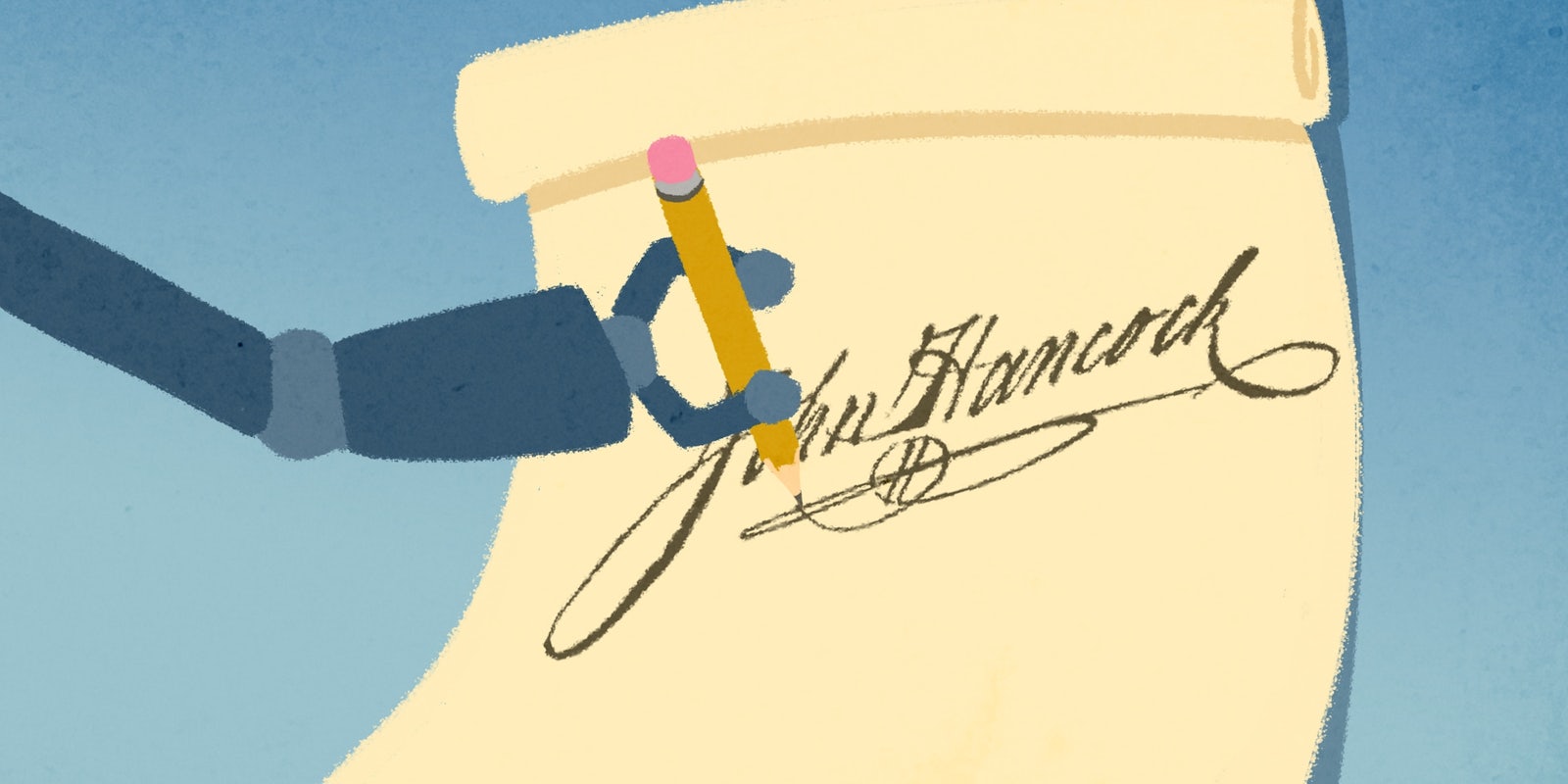You’ve been warned to be wary of pictures and comments you post on the internet. You might soon want to safeguard your handwritten notes as well.
Researchers at University College London (UCL) have developed a program that can analyze a person’s handwriting and semi-automatically generate text that seems to be written by the same person, with creepy accuracy. It’s called “My Text in Your Handwriting,” and while it creates unprecedented opportunities that can improve productivity and efficiency, it can also raises serious privacy and security concerns.
UCL’s handwriting application is built around glyphs, or specific instances of characters. Each person has a unique and recognizable way in which they write each letter. The algorithm tries to discern this style, along with the threshold of variations, irregularities, and the author’s spacing habits.
After being able to recognize the patterns and consistencies, the program begins to reproduce the handwriting with authentic detail, such as pen-line texture, color, and even techniques used to join letters. The algorithm also adds an amount of randomness to mask its computer-generated origins and avoid producing an uncanny valley effect—that feeling of eeriness caused by things that are almost but not exactly human-like.
The reason the algorithm is called semi-automatic is that despite its complexity, it is not flawless. It produces errors and mistakes that are immediately visible to the human eye, and it needs the assistance of a human user to perform the one-time task of interactively correcting mistakes.
“My Text in Your Handwriting” is the most accurate replication of human handwriting by computer to date. Previous attempts were based on the use of fonts. “The problem with such fonts is that it is often clear that the text has not been penned by hand, which loses the character and personal touch of a handwritten piece of text,” says Dr. Oisin Mac Aodha, co-author of the research paper. “What we’ve developed removes this problem.”
The team tested the accuracy of the algorithm by asking people to try to distinguish between handwritten and computer-generated envelopes. While they had previous knowledge of the matter, the participants were still fooled by the artificial handwriting 40 percent of the time.
According to lead researcher Dr. Tom Haines, the algorithm can be used in a number of scenarios, such as helping stroke victims to formulate letters without the concern of illegibility, or translating comic books into different languages while preserving the author’s style.
A video posted by the researchers on YouTube shows some of the applications of the algorithm, including how it can be used to boost production in the movie industry by enabling directors to change handwritten content in scenes without the need to re-shoot.
https://www.youtube.com/watch?v=3mAKZaOPbBo
The same technology can be put to evil use as well, given how convincing the results are. The researchers fed sample historical documents to the system and were able to reproduce the handwriting of figures such as Abraham Lincoln, Frida Kahlo, and Arthur Conan Doyle. Nothing would stop fraudsters from using the same technology to forge important legal or historical documents, or produce false evidence in court cases.
The researchers have dismissed such a notion by saying that it works both ways, and the technology can be used to detect forgery. That’s assuming, of course, that both sides in a conflict would have equal access to the technology.
“[B]y taking the novel approach of viewing handwriting as texture-synthesis, we can use our software to characterize handwriting to quantify the odds that something was forged,” says Dr. Gabriel Brostrow, another member of the research team. “For example, we could calculate what ratio of people start their ‘o’s’ at the bottom versus the top and this kind of detailed analysis could reduce the forensics service’s reliance on heuristics.”
But that would only happen after a person’s suspicion is aroused by a possibly forged handwriting, which can be difficult due the algorithm’s level of accuracy. In an interview with Digital Trends, Haines admitted that while it might not slip past forensic examiners and scientists, the algorithm’s results are likely to fool the untrained eye, “so there’s a risk of fooling normal people.”
From chatbots that interact like humans to mysterious programs that beat humans at some of the most complicated board games, machine learning algorithms have done much to erase the lines between man and machine. With “My Text in Your Handwriting,” another tenet of what distinguishes us from lines of code has crumbled to dust.
Ben Dickson is a software engineer at Comelite IT Solutions. He writes about technology, business, and politics. Follow him on Twitter or read his blog.


